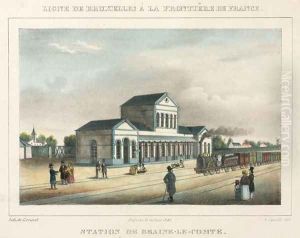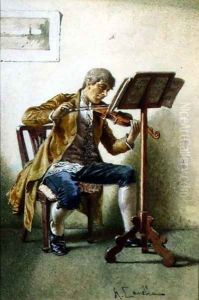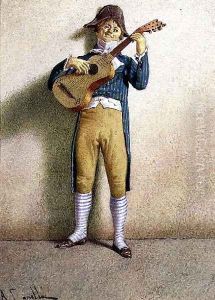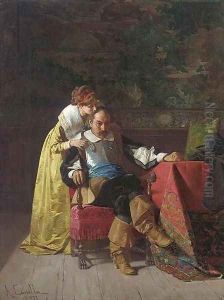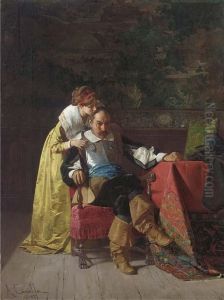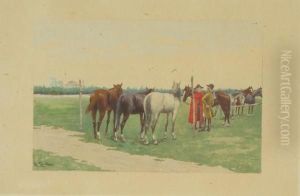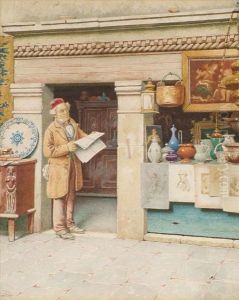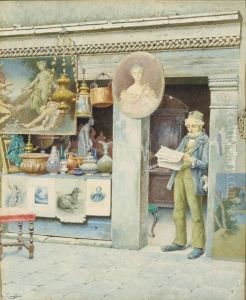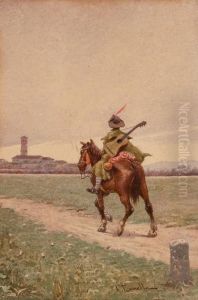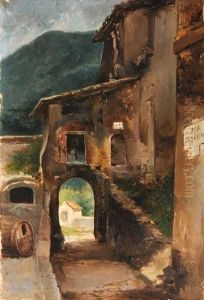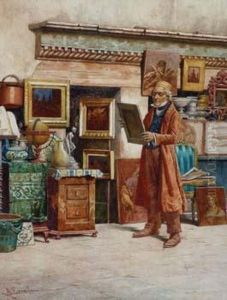A. Canella Paintings
Giuseppe Canella, born in Verona in the year 1800 and passing away in 1879, was an Italian artist known for his masterful landscapes and cityscapes that capture the essence of 19th-century Italy and Europe. Initially starting his career under the guidance of his father, Giovanni Canella, who was also a painter, Giuseppe's early works were influenced by the Neoclassical style. However, his style evolved significantly over the years, as he began incorporating more romantic elements into his paintings, reflecting the changing tastes of the era.
Giuseppe Canella embarked on extensive travels throughout Italy, France, and Germany, which greatly influenced his artistic development. His journeys allowed him to study and capture various cityscapes and landscapes, each imbued with meticulous detail and atmospheric perspective. This period of travel was crucial in shaping his distinctive style, characterized by vibrant light and precise architectural details, making his works highly sought after by collectors and art enthusiasts of his time.
In the 1830s, Canella shifted his focus towards painting cityscapes, a genre in which he would excel and become most renowned. His cityscapes of Venice, Milan, Naples, and Florence, among others, are celebrated for their accuracy and the lively activity depicted within them, offering viewers a glimpse into the daily life of these cities during the 19th century. Canella's talent in this genre earned him significant recognition, and he was commissioned by prominent figures of his time to create works that captured the beauty and essence of Italy's urban landscapes.
Throughout his career, Giuseppe Canella also participated in numerous exhibitions, gaining accolades and the admiration of both his contemporaries and art critics. His works are now part of collections in major museums and galleries across the world, testament to his enduring legacy and the impact he had on the landscape and cityscape genres of his time.
Giuseppe Canella's contributions to the art world extend beyond his paintings; he was also instrumental in influencing the next generation of artists, including his son Enrico Canella, who followed in his footsteps as a painter. Giuseppe's dedication to capturing the changing landscapes and cityscapes of 19th-century Europe has left a lasting mark on the art historical landscape, making him a significant figure in the Romantic movement in Italian art.
